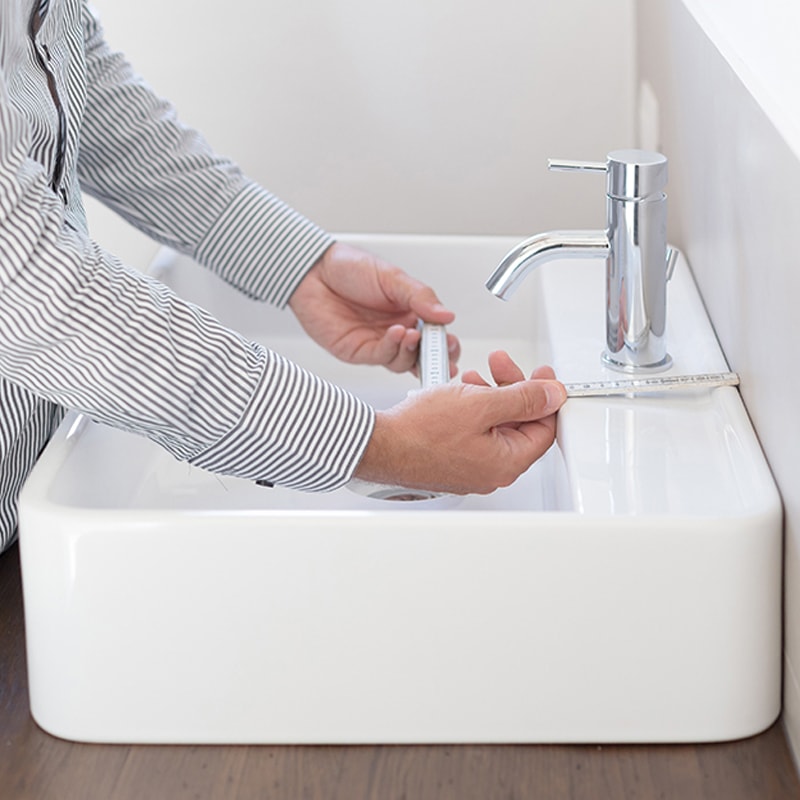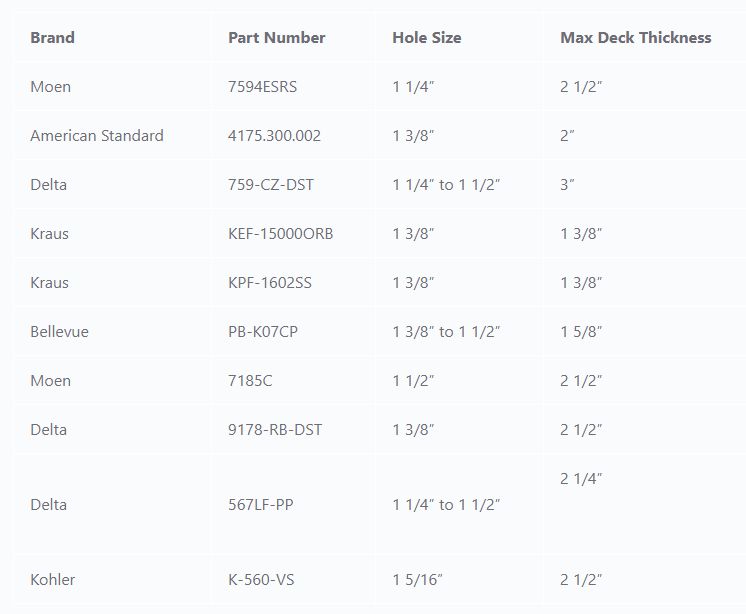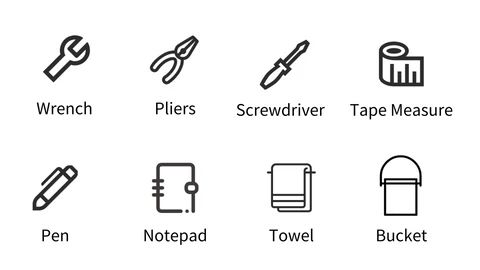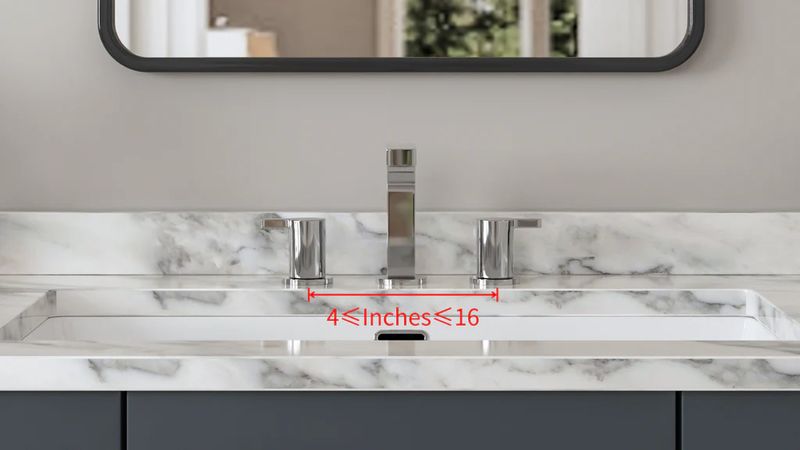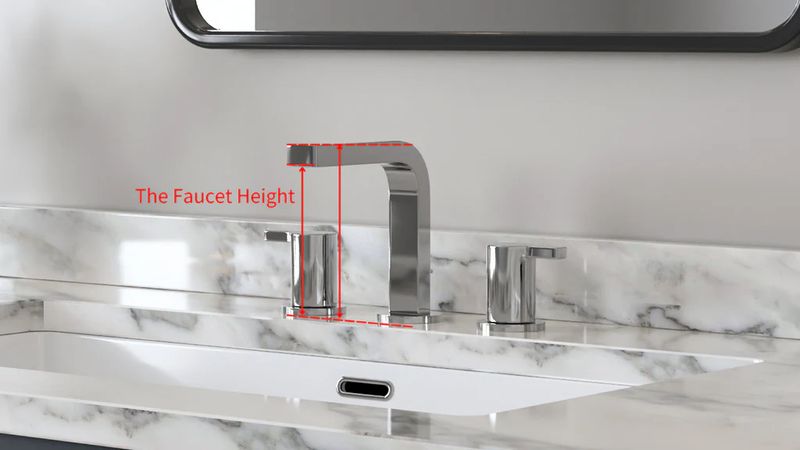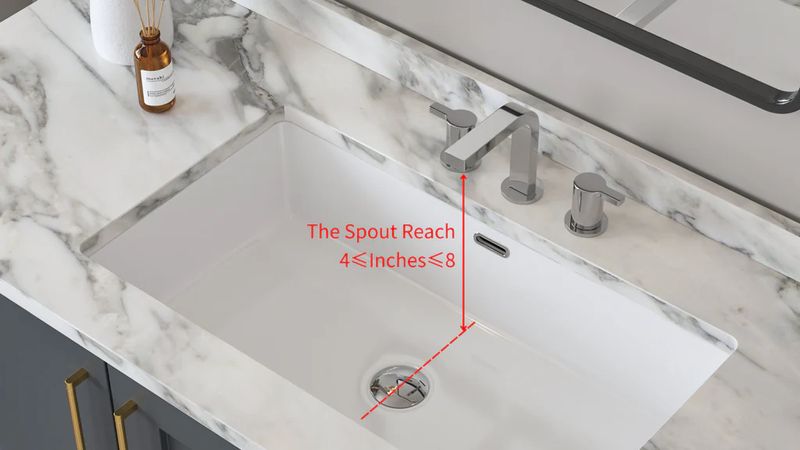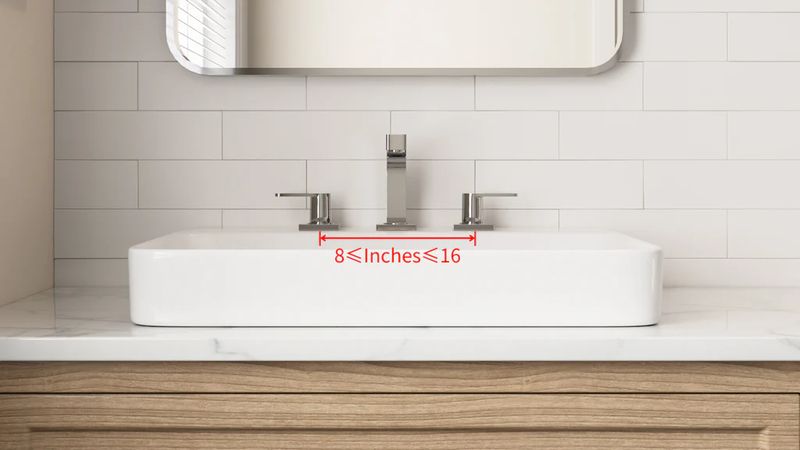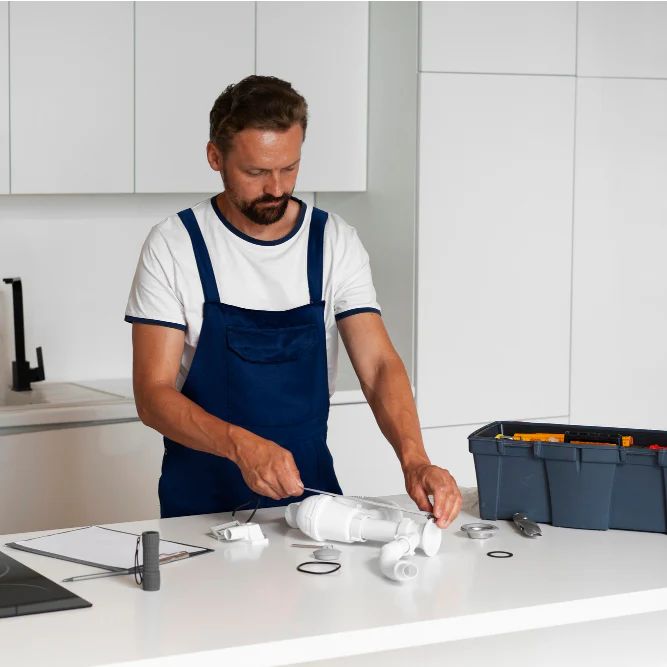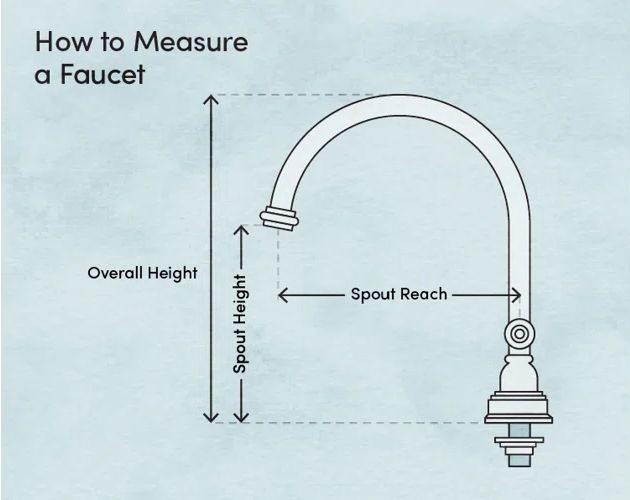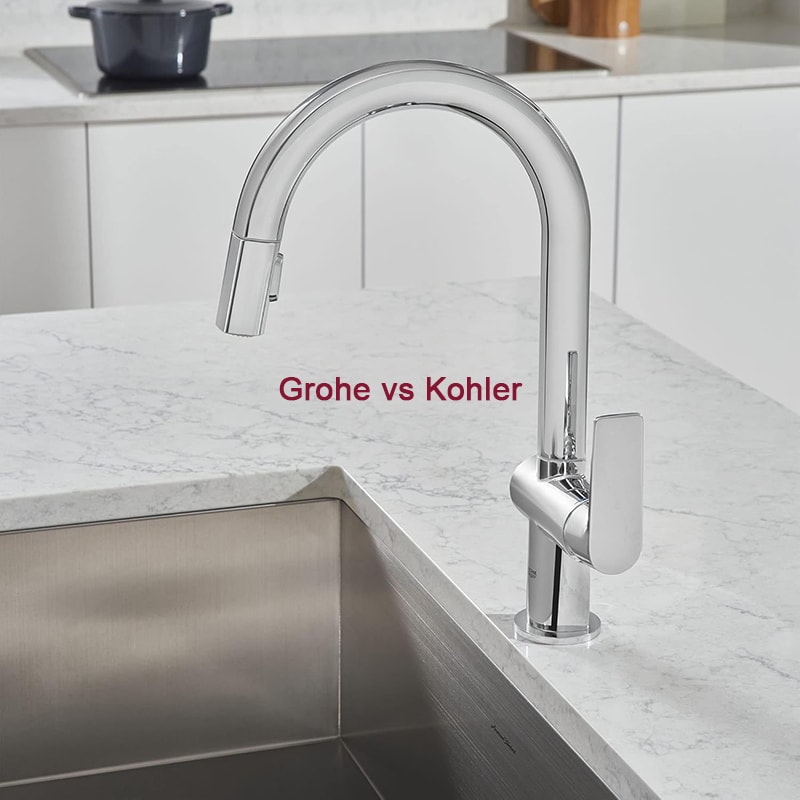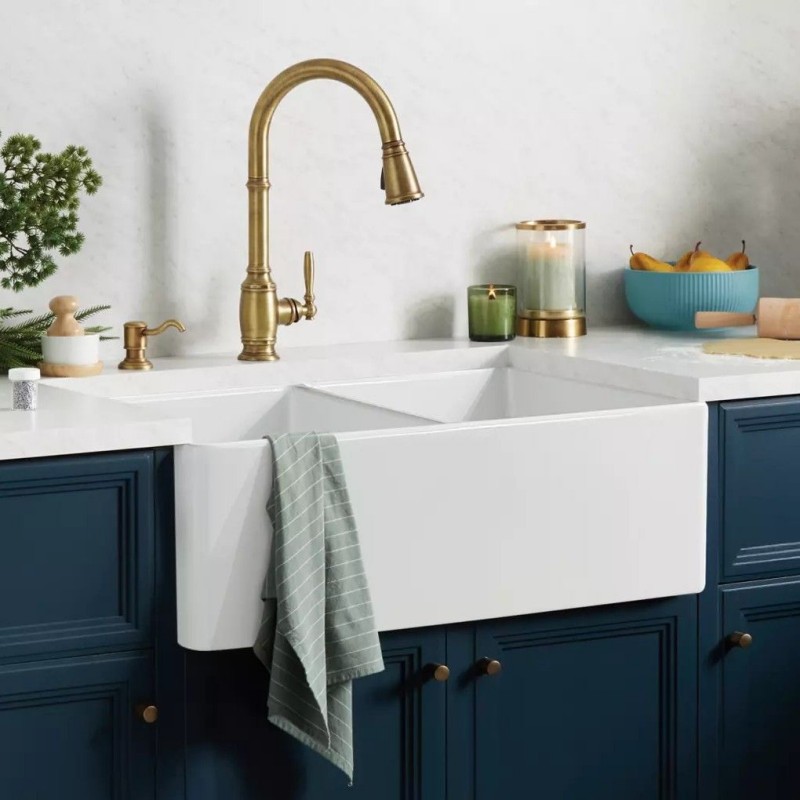 English
English
Jabra Sanitary is a sanitaryware supplier offering toilets, sinks, faucets, bathtubs, etc., at competitive prices. If you're a distributor, wholesaler, or project contractor, get a quote today!
 $23.9 Limited-time Offer
$23.9 Limited-time Offer Consignment Policy
Consignment Policy 20 Years of Experience
20 Years of Experience
Choosing the right faucet size is crucial for both functionality and aesthetics in your kitchen and bathroom. An ill-fitting faucet can lead to installation challenges, leaks, and even water damage.
Whether you're replacing an existing faucet or setting up a new sink, understanding sink faucet sizes is essential. In this guide, we will walk you through the different faucet types, how to measure for the right fit, and the standard sizes available for kitchen and bathroom faucets.
Table of Contents
Are All Faucet Threads the Same?
Standard Faucet Size
Faucet Hole Sizes From Different Brands
Before You Begin to Measure Bathroom or Kitchen Faucet Size
How to Measure a Faucet for Kitchen or Bathroom
FAQs
Conclusion
Are All Faucet Threads the Same?
No, not all faucet threads are the same. Faucet threads come in different sizes and types, which affects compatibility with hoses and connectors.
The two primary thread types are male and female. Male threads have external ridges, while female threads have internal ridges that fit into male threads.
It is important to identify the type of thread your faucet has before installation to ensure a secure connection. Knowing how to measure faucet thread size is critical to avoid issues during installation.
Standard Faucet Size
Common thread sizes for kitchen and bathroom faucets include 15/16"-27 and 13/16"-27, which are typical for aerators, as well as ½" IPS (Iron Pipe Size), commonly used for faucet connections.
Ensuring the correct thread type helps maintain compatibility, preventing leaks and installation issues. Understanding faucet sizes is also important to match the correct fittings.
Standard faucet sizes may vary based on the type of sink and faucet design. The following are common faucet types and their typical sizes, making it easier to choose the right faucet for your needs:
Centerset Faucet
Centerset faucets are designed for sinks with three holes and have a compact configuration.
The handles and spout are mounted on a base plate, typically 4 inches wide. They are ideal for smaller sinks, such as bathroom sinks and compact kitchen sinks, providing a seamless look and easy installation.
Centerset faucets often have a standard bathroom faucet size, making them a popular choice for homeowners who need to fit a standard size faucet into their space.
Single-Hole Faucet
Single-hole faucets are designed for sinks with a single pre-drilled hole. They have a streamlined appearance, making them popular for modern sinks. These faucets generally have a smaller footprint, making them suitable for compact sinks.
The standard size for single-hole faucets typically includes a spout reach of 5-8 inches and a height of 6-12 inches. They are commonly used in both kitchens and bathrooms where space-saving designs are prioritized.
Widespread Faucet
Widespread faucets are more flexible and are typically used in sinks with three separate holes. They have separate hot and cold handles that can be placed 6-16 inches apart.
Widespread faucets provide a luxurious look and work well in larger bathroom sinks, offering more customization in terms of spout reach and height. They fit well into various bathroom faucet sizes and can be tailored to match the layout of the sink.
Faucet Hole Sizes From Different Brands
Different faucet brands may have slight variations in hole sizes, making it essential to verify the dimensions before purchasing a faucet. While most brands adhere to standard faucet sizes, there can be slight differences depending on the model and style.
Here's an overview of typical hole size from some popular brands and a bathroom faucet size chart:
- Kohler: Kohler faucets generally require a 1.25-inch diameter hole for installation. Widespread models may need larger holes, especially for separate handles. <Check Grohe vs Kohler comparison>
- Delta: Delta's centerset and single-hole faucets typically need a 1.375-inch diameter hole, while widespread models require a hole diameter of up to 1.5 inches. This aligns with the standard hole size for kitchen faucet models offered by the brand.
- Moen: Moen faucets commonly fit into 1.25-1.5 inch holes, with wall-mount models requiring larger openings for secure installation.
Before buying, check the manufacturer's specifications to ensure that the faucet fits your sink's hole size. If the sink hole is smaller than needed, you may need to drill it wider, while larger holes may require additional adapters for a secure fit.
Before You Begin to Measure Bathroom or Kitchen Faucet Size
Read Our Types of Sink Faucet Guide
Before selecting or installing a new faucet, familiarize yourself with the different types of faucets available. This will help you understand which faucet type is suitable for your sink design, installation method, and personal preferences.
Options include centerset, widespread, single-hole, vessel sink, and wall-mount faucets, each of which varies in dimensions and installation requirements. Understanding how to measure bathroom faucet size can help ensure proper fitting.
Prepare Tools and Materials
Gather the necessary tools and materials before starting the installation or measurement process. This ensures a smooth workflow and prevents unnecessary delays.
Here's a checklist of the tools and materials needed:
- Wrench
- Pliers
- Screwdriver
- Tape Measure
- Pen or Pencil
- Notepad
- Towel
- Bucket
How to Measure a Faucet for Kitchen or Bathroom
Accurate measurements are critical for choosing a faucet that fits perfectly. Follow these steps to measure your faucet correctly:
Determine the Mounting Holes
Check how many mounting holes your sink has and their spacing. Count the pre-drilled holes and measure the distance between the centers of the holes. This information is crucial for selecting the right faucet style and ensuring compatibility.
Measure Faucet Center
Measure the center-to-center distance between the mounting holes. This measurement helps determine the correct centerset or widespread faucet fit and is part of measuring bathroom faucet size accurately.
Decide the Faucet Height
Faucet height is an essential factor, especially when considering the overall appearance and function. Measure from the base of the sink to the highest point of the faucet. The height should be proportionate to the sink size and the surrounding space, which is a vital consideration in both kitchen and bathroom faucet sizes.
Check Your Spout Reach
Spout reach is the horizontal distance from the faucet's base to the tip of the spout. It is a crucial measurement to ensure that the water stream reaches the sink bowl without causing splashes. To measure spout reach, start from the center of the faucet base and measure to where the water will flow into the sink bowl. It's an important factor in determining sink faucet sizes that match your needs.
Figure Out Current Installation Type
Identify your sink's installation type. Is it a centerset, single-hole, widespread, or wall-mount? This will guide you in determining the faucet type that will fit your sink.
Different faucet types have different spread configurations, which refers to the distance between the hot and cold handles and the spout.
Knowing how to measure faucet size correctly is essential for successful shower faucet installation or kitchen faucet installation.
Widespread Faucets
Measure the center-to-center distance between the hot and cold handles. Standard widespread faucets have a spread of 8-16 inches.
Single-Hole Faucets
Measure only the spout reach and height, as they are mounted through a single sink hole.
Wall-Mount Faucets
These faucets require precise measurements for installation, and it's best to consult a professional, as adjusting the configuration after installation is challenging.
Choose a Faucet With the Right Measurements
After gathering all the measurements—faucet center, height, spout reach, and spread configuration—you can confidently select a faucet that meets your requirements.
When shopping a new faucet, compare your measurements with the manufacturer's specifications to ensure a good fit. Understanding the standard bathroom faucet size and the standard hole size for kitchen faucet installations can help streamline the process.
FAQs
Can I use a drill to tap a hole?
Yes, you can use a drill to tap a hole, but it requires precision and the correct drill bit size. Drilling a hole in your sink should be done carefully to prevent damage, especially if the sink is made of porcelain or stone. If you're unsure, consult a professional to avoid any mishaps.
What size hole do I need for a faucet?
The standard hole size for most faucets is 1.25 to 1.5 inches in diameter. Some brands may have different requirements, so always check the manufacturer's instructions. Wall-mount faucets often require larger holes to accommodate plumbing connections, which affects the size of faucet holes in sink installations.
What can happen if I bought a kitchen faucet with the wrong hose size?
Using a faucet with the wrong hose size can lead to leaks, poor water flow, or even damage to the faucet or sink. Always check hose compatibility and use the correct size adapters if needed to ensure a secure and leak-free installation. This is critical when considering are all kitchen faucets the same size.
What can I do for a small faucet hole size?
If your sink has a smaller hole than required, you can use a drill to enlarge it, or you can opt for a faucet model that has a smaller base. Alternatively, consider using an adapter plate to fit the faucet securely over the existing hole, aligning with the standard faucet hole size.
How to conceal a kitchen sink's spare hole?
You can use a sink hole cover or soap dispenser to conceal a spare hole in the sink. These covers are available in various designs and finishes to match your faucet and sink. They are easy to install and help maintain a clean look.
Conclusion
Choosing the right faucet size for your kitchen or bathroom sink involves a combination of accurate measurements, understanding standard sizes, and selecting a design that complements your space. Proper sizing ensures a functional, leak-free installation and an aesthetically pleasing look.
From measuring faucet height and spout reach to checking mounting holes and spread configuration, each step is crucial for the perfect fit. Take the time to carefully measure and compare your options to ensure long-term satisfaction with your new faucet. When in doubt, consult a professional to make sure your choice aligns with your sink's requirements.
With this guide, you're now equipped to select a faucet that meets both your style and functional needs, making your kitchen or bathroom both practical and visually appealing.







